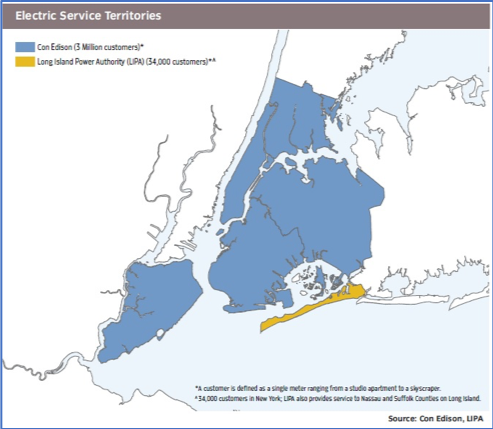This project includes five semi-structured interviews with non-profits or community groups, including feedback from the partner organization, which will be referred to as (PO) from this point. Other groups included a solar policy advocacy organization and a solar education organization, the former working nationally and the latter based in NYC. The policy organization is focused on enabling solar for individuals and communities nationwide, where the solar education organization works only in New York and offers education and technical assistance. Consistent with the literature on Community Solar (CS) like Noll et. al, (2014), positive social peer effects seem to also be of value in the CS space as well as just the residential PV space [1]. CS differs from residential PV in many ways, as in the CS context, many of the beneficiaries are not purchasing the solar assets or placing them on property they own. According to US Census Bureau Data, more than half the residents in New York City are renters, making them ineligible to install solar panels on their homes even if they wanted to [2]. Therefore, community solar programs are the only way for many of the households to participate in the solar PV economy. The community partner in this study is focused on local renewable energy because it is something that community members would like to see, as there is heightened awareness of the fragility of energy infrastructure as an aftereffect of the city’s response to their neighborhood after Hurricane Sandy [3]. The PO also expressed an interest in having agency and control over their energy production, and they see this community control of energy as having a significant value to their specific community [4].
An emergent theme from the interviews and communications with community stakeholders, was that CS projects are a way to promote social equality and community development. One of the community stakeholder interviewees, an energy policy expert from a national solar advocacy non-profit, sees CS as “a key way to advance a more just and equitable clean energy future [5].” This is in line with the views of the PO and three other interviewees. This suggests that these community groups look at the issue of energy availability and purchasing at a systemic level instead of a small savings on electricity bills. This does not diminish the importance of these savings, as easing the economic burdens of utility costs provides value to ratepayers, but as more than one interviewee mentioned (M.E., Personal Communication, February 05, 2018, N.G., Personal Communication, April 27, 2018, J.P., Personal Communication, April 04, 2018), the typical discount for CS subscribers is about 5-10%, which usually amounts to $50-100 per year. This amount of savings definitely makes a difference for people, especially LMI populations, but the policy expert told me, “Community solar by itself will not serve underserved communities. You need the right policies in place…[you] also need workforce development…and [making] it inclusive [6]. If looked at through this broader economic empowerment lens, CS could be a powerful driver of local economic development if the right state and local policies are put into place.
Unfortunately, New York State’s solar policies have quite a few barriers for enacting CS. One significant one that, according to one of the interviewees (N.G.), community solar can only be purchased within the same utility zone [7]. The literature also supports this [8] assertion, for instance, residents of New York City can only subscribe to a community solar program within their utility’s territory, which is most likely Consolidated Edison or National Grid (if they reside in parts of Long Island) [9]. City residents are incapable of taking advantage of CS programs that may be available in any of the other 40-plus utilities in the state [10]. While this gives NYC residents much less choice, N.G. (Personal Communication, April 27, 2018) claims that it encourages more CS development at a local level. Compared to New Jersey, which is just across the river, New York has a lot of ground to make up in terms of making a strong community solar market and according to another interviewee (M.S.), “Communities need to be involved in the CS process. Inclusion and benefits for LMI people are something that [is happening] in New Jersey. They are pushing for Environmental Justice (EJ) and everyone should be involved in that [11].”

In summary, there are both small (bill reduction) and large (workforce development) direct economic factors identified by the community organizations interviewed for this study as critical to motivating the push for CS. Both the PO and others brought in to assist the project team with information about the project viewed the larger economic empowerment issues as key, but there is also a running theme of empowerment and environmental justice that CS could provide for communities. CS has been shown in Noll et. al. (2014) to activate communities socially and politically, which may be a key to driving local policies to better enable CS adoption in the state of New York and other similar locales in the United States. In this case, it was more the other way around, where the PO planned to leverage their political power to pursue CS.
References:
[1] Dawes, C., Noll, D., & Rai, V. (2014). Solar Community Organizations and active peer effects in the adoption of residential PV. Energy Policy, 67, 330–343. Retrieved from https://ac.els-cdn.com/S0301421513013141/1-s2.0-S0301421513013141-main.pdf?_tid=1ecdd993-26e9-4463-96e2-ef6d44051229&acdnat=1520464747_7663e374320d22291abb0b8a011d1778
[2] US Census Bureau. (2015). 2013 Housing Profile: New York City, NY. Retrieved from https://www2.census.gov/programs-surveys/ahs/2013/factsheets/ahs13-15_NYC.pdf
[3] R.C. Personal Communication. January 13, 2018.
[4] Ibid.
[5] M.S. Personal Communication. April 03, 2018.
[6] Ibid.
[7] N.G. Personal Communication. April 27, 2018.
[8] Cook, J. J., & Shah, M. (2018). Focusing the Sun: State Considerations for Designing Community Solar Policy. Golden, CO.
[9] City of New York. (2013). NYC Special Report Initiative for Rebuilding and Resiliency, Chapter Six: Utilities. New York. Retrieved from http://www.nyc.gov/html/sirr/downloads/pdf/final_report/Ch_6_Utilities_FINAL_singles.pdf
[10] Electric Utilities Listing. (n.d.). Retrieved May 1, 2018, from http://www3.dps.ny.gov/W/PSCWeb.nsf/All/03627EFC626529EE85257687006F39CD?OpenDocument
[11] M.S. Personal Communication. April 03, 2018.
